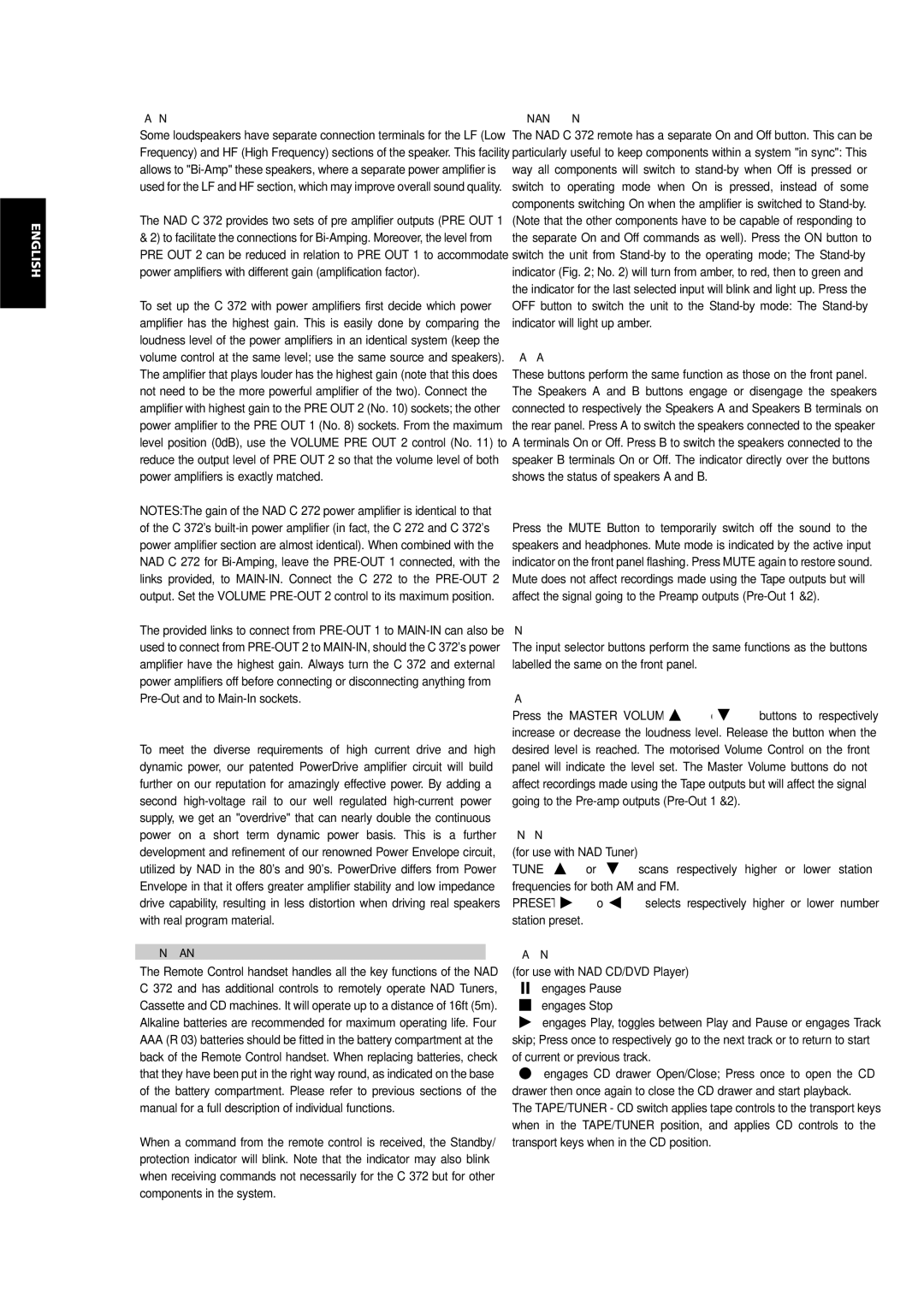C 372 specifications
The NAD C 372 is a prominent integrated amplifier known for its exceptional clarity, power, and versatility, making it a favorite among audiophiles and music enthusiasts alike. Designed to deliver a high-quality audio experience, the C 372 integrates a variety of advanced technologies and features that contribute to its outstanding performance.One of the standout characteristics of the NAD C 372 is its robust power output. The amplifier delivers a formidable 150 watts per channel into 8 ohms, ensuring that even the most demanding speakers are adequately driven. This ample power, coupled with NAD's signature Direct Digital Amplification technology, allows for accurate sound reproduction with minimal distortion. The result is a dynamic listening experience that brings music to life with vivid detail.
Another notable feature of the C 372 is its innovative PowerDrive technology. This allows the amplifier to remain stable and produce consistent sound quality across a wide range of speaker impedances. The ability to adapt to different loads makes it versatile enough to match with various speaker types, enhancing the overall listening experience and providing the listener with a significant degree of flexibility.
In addition to its powerful amplification capabilities, the NAD C 372 incorporates a high-quality phono stage, making it an excellent choice for vinyl enthusiasts. The built-in MM/MC (moving magnet/moving coil) phono input ensures that even the finest nuances of a record are captured and reproduced accurately. This feature underscores NAD's commitment to preserving the integrity of analog sources while integrating them seamlessly into a modern audio setup.
The C 372 also offers a range of connectivity options, including multiple line-level inputs, digital inputs, and a home theater bypass function. This versatility allows the amplifier to serve as a central hub for various audio sources, from CD players to streaming devices, ensuring that users can enjoy their music and films without limitations.
Furthermore, the NAD C 372 is designed with a user-friendly interface, featuring a clear display and intuitive controls that make operation straightforward. Its classic design, combined with a solid build quality, ensures that the amplifier not only performs excellently but also looks great in any audio setup.
In summary, the NAD C 372 integrated amplifier stands out through its powerful output, advanced technologies like PowerDrive and Direct Digital Amplification, versatile connectivity options, and a dedicated phono input. It is a well-rounded choice for anyone looking to elevate their home audio experience.

